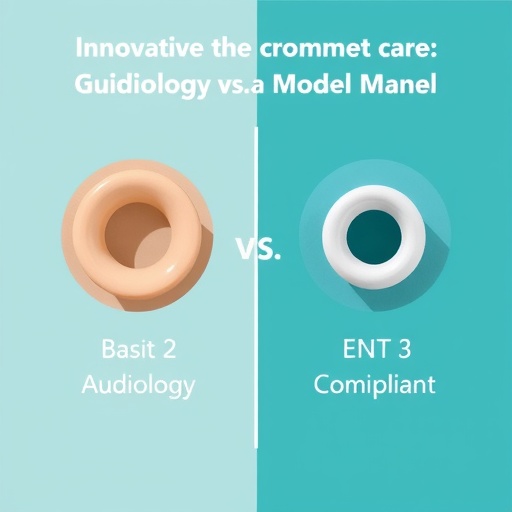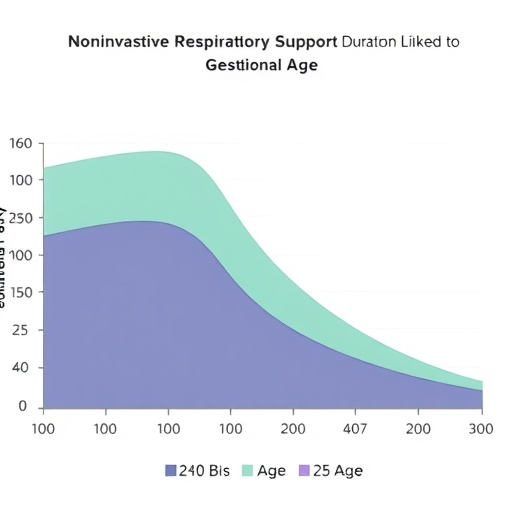In a groundbreaking nationwide study conducted in Denmark, researchers have uncovered compelling evidence that vaginal estrogen tablets may not elevate the risk of recurrent ischemic stroke in postmenopausal women who have already experienced a stroke. Published in the esteemed journal Stroke, this study addresses a critical knowledge gap concerning the safety profile of vaginal estrogen therapies in a high-risk population often excluded from hormone replacement therapy research.
Hormone replacement therapy (HRT) has long been a subject of debate due to its complex effects on cardiovascular risks, particularly stroke. While systemic estrogen therapies, such as oral tablets, are known to increase the incidence of ischemic stroke in postmenopausal women, the impact of vaginal estrogen—administered locally and absorbed through the vaginal mucosa—remained unclear for women with established cerebrovascular disease. This innovative research leverages the comprehensive national health registries of Denmark to elucidate the relationship between vaginal estrogen use and stroke recurrence in a real-world clinical context.
The study harnessed prescription data and health records spanning a decade, encompassing over 34,000 postmenopausal women aged 45 and above who had survived a first ischemic stroke. Notably, the cohort excluded women who were using vaginal estrogen before their initial stroke, ensuring a refined focus on post-stroke estrogen initiation and continued use. By meticulously matching each woman who suffered a second stroke with a control subject of the same age who did not experience a recurrent event, the researchers employed a nested case-control study design to rigorously assess risk associations.
.adsslot_1ifv9CrzFj{ width:728px !important; height:90px !important; }
@media (max-width:1199px) { .adsslot_1ifv9CrzFj{ width:468px !important; height:60px !important; } }
@media (max-width:767px) { .adsslot_1ifv9CrzFj{ width:320px !important; height:50px !important; } }
ADVERTISEMENT
Their findings are striking. No statistically significant increase in the risk of second stroke events was observed among women currently using vaginal estrogen tablets, regardless of dosage intensity or duration of use. The data showed equivalency across current, recent, and past users, highlighting that even heightened cumulative exposure failed to translate into elevated stroke risk. This aligns with previous findings in healthy postmenopausal women but extends the reassurance to a vulnerable population at augmented risk for cerebral ischemic events.
Kimia Ghias Haddadan, M.D., lead investigator and cardiology specialist at Copenhagen University Hospital, underscored the significance of these insights: the evidence supports the therapeutic safety of vaginal estrogen in postmenopausal women with prior stroke—a cohort frequently excluded from hormone therapy clinical trials. “Our research demonstrates that local estrogen therapy does not increase recurrent ischemic stroke risk, offering new hope for symptom management without compromising neurological safety,” Dr. Haddadan remarked.
This study’s robustness is amplified by Denmark’s universal healthcare system, which provides comprehensive, high-fidelity prescription, diagnosis, and demographic data across the entire population. Such an extensive dataset permits an unparalleled examination of treatment outcomes in real-world conditions, circumventing many limitations of smaller clinical investigations prone to selection bias or incomplete adherence assessment.
However, the investigators caution against overinterpretation. As an observational study relying on prescription dispensation rather than confirmed ingestion, adherence uncertainty persists. Moreover, the exclusion of other vaginal estrogen formulations such as creams, rings, and patches means findings cannot be generalized wholesale beyond vaginal tablets. Additionally, despite adjustments for a wide range of confounders—including comorbidities, socioeconomic status, and concurrent medications—residual confounding from unmeasured behavioral or clinical factors cannot be entirely eliminated.
Expert epidemiologist Samar R. El Khoudary, Ph.D., M.P.H., FAHA, of the University of Pittsburgh, who was not involved in the study, praised the research for addressing an understudied population and advancing understanding of estrogen’s differential safety impacts based on administration route. She emphasizes cautious optimism, recognizing the indispensable value of real-world data to guide clinical decision-making in populations rarely represented in randomized trials.
From a clinical perspective, these findings have profound implications. Postmenopausal women with a history of stroke often face a therapeutic dilemma: managing distressing menopausal symptoms while minimizing the risk of life-threatening cerebrovascular events. Vaginal estrogen tablets emerge as a potentially safe option for symptom relief without the systemic risks associated with oral hormone replacement, possibly enhancing quality of life for countless women.
Yet, as Dr. Haddadan advises, these results should not be misconstrued as evidence of stroke prevention by vaginal estrogen. The data simply indicate an absence of increased recurrent stroke risk associated with the local therapy in this particular high-risk group. Ongoing surveillance and further research examining diverse estrogen formulations and longer-term outcomes remain essential.
In sum, this pioneering investigation enriches the field’s understanding of estrogen therapy safety in postmenopausal stroke survivors. It advocates for a personalized, evidence-based approach to menopausal symptom management, integrating nuanced risk assessment with patient-centered considerations. As this novel data circulates globally, clinicians may gain confidence in prescribing vaginal estrogen tablets, thus addressing an unmet clinical need with rigorously vetted treatment options.
The Danish nationwide registry study serves as a model for leveraging population-level data to resolve complex clinical queries otherwise unapproachable through randomized controlled trials alone. By illuminating the interaction between hormone therapy modalities and cerebrovascular risk, it paves the way for more tailored interventions that optimize health outcomes for women navigating the multifaceted challenges of menopause after stroke.
Subject of Research: Recurrent ischemic stroke risk associated with vaginal estrogen use in postmenopausal women with prior stroke.
Article Title: Recurrent Ischemic Stroke and Vaginal Estradiol in Women With Prior Ischemic Stroke: A Nationwide Nested Case-Control Study
News Publication Date: August 21, 2025
Web References:
Journal Link: https://www.ahajournals.org/doi/10.1161/STROKEAHA.125.050986
American Stroke Association: https://www.stroke.org/
Additional media release: https://newsroom.heart.org/news/vaginal-estrogen-tablets-may-be-safe-for-postmenopausal-women-who-have-had-a-stroke
References: Information derived from the article published in the journal Stroke, DOI: 10.1161/STROKEAHA.125.050986
Keywords: Estrogen, Estrogen signaling, Women’s studies, Hormone replacement therapy, Ischemic stroke, Postmenopausal women, Vaginal estrogen, Recurrent stroke risk
Tags: cardiovascular risks in womenDenmark health studyestrogen absorption through vaginal mucosahormone replacement therapy safetyhormone therapy exclusion criteriaischemic stroke risklocal estrogen administrationpost-stroke treatment optionspostmenopausal stroke survivorsstroke recurrence preventionvaginal estrogen therapywomen’s health research





